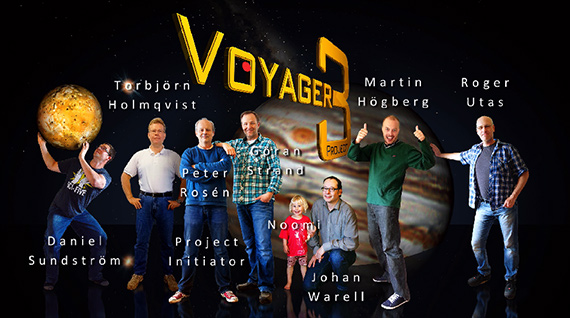In 1979, NASA’s Voyager 1 probe presented a spectacular photo series of Jupiter during its final approach. The photos revealed the intricate movement of Jupiter’s cloudbelts for the first time. In 2013, almost exactly 35 years later, seven of Sweden’s amateur astronomers, led by Peter Rosén, attempted to replicate the historical NASA footage using their own ground-based telescopes. They called their project “Voyager 3”:
Though the astronomers faced the worst weather that Sweden had had for decades, the variety of geographical spread allowed them to successfully complete the project. Each set up at their own area and together they recorded more than a million frames in just over 90 days, resulting in 560 still images.

The entire Voyager 3 team.
The team then used a program called Winjupos to map out the images in cylindrical and polar projections. These were then stitched into complete maps that covered the entire surface of Jupiter. Using their 560 images, they produced 18 complete maps in three months. However, the maps were unevenly spread out in the given time frame.

The editing process in action.
For a smooth animation, one map is needed per day. Therefore, the astronomers used FantaMorph by Abrosoft to use morphing techniques and generate the intermediate frames that were needed to fill the timeline gaps.
Using Starry Night Pro Plus to simulate flybys and animations, the final product exceeded their expectations and closely resembled the original Voyager 1 footage.

The final product of the mission.
The Voyager 3 team intends to release similar footage of Saturn in August 2015, weather permitting.
Like This Article?
Don't Miss The Next One!
Join over 100,000 photographers of all experience levels who receive our free photography tips and articles to stay current:






Leave a Reply